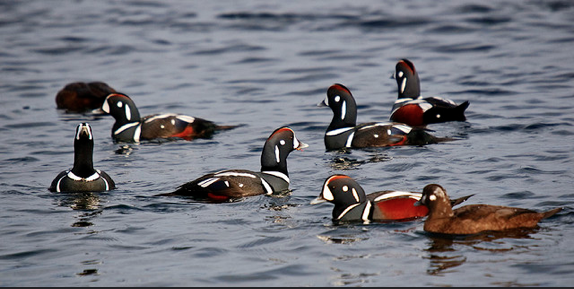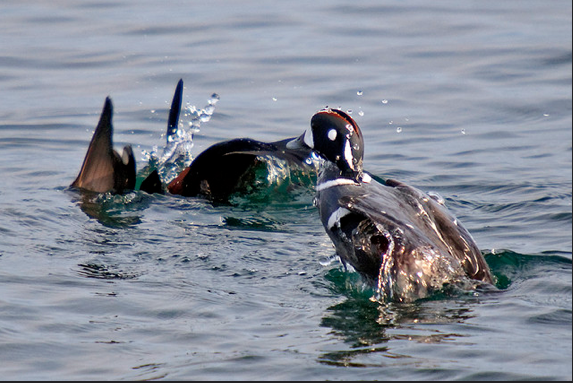This post describes the history leading up to the updating of the DFO Marine Mammal regulations of the Fisheries Act in Canada. It is my observation that even with clear recommendations leading up to the rewriting of the act, there is no evidence that marine mammal viewing regulations have been included in the Act.
1. The current statement from DFO on Marine Mammal Viewing guidelines is available at :
http://www.pac.dfo-mpo.gc.ca/fm-gp/species-especes/mammals-mammiferes/view-observer-eng.html
2. The DFO Regulations Amending the Marine Mammal Regulations are archived here: http://gazette.gc.ca/rp-pr/p1/2012/2012-03-24/html/reg2-eng.html
3. The Marine Mammal regulations ( Whale watching Provisions) are found here:
http://www.dfo-mpo.gc.ca/acts-lois/rules-reglements/rule-reglement05-eng.htm
4. The Marine Mammals Regulation Act is located here:
http://laws-lois.justice.gc.ca/eng/regulations/SOR-93-56/FullText.html
HISTORY:
Amendments to the DFO guidelines on Marine mammal viewing were made after public consultations in 2002- 2003:
From the Pacific Consultations Summary of March 2003 The following section 5.3 ,
Regulation of Commercial Marine Mammal Viewing Businesses is quoted here in its entirety:“A large majority of the feedback supported the implementation of specific measures pertaining to the marine mammal viewing industry, but questions were raised on the inherent problems of: funding, education, enforcement/monitoring, management and control of operators. It was stated that any actions taken would be positive and in turn creates accountability within ecotourism and could provide an opportunity to educate all mariners on ethical viewing practices and species behaviours. It was questioned on how DFO will define a vessel is being used for marine mammal viewing and how DFO will verify/enforce this in regards to commercial or recreational vessels. It was mentioned by one person that those vessels already are defined under the Canada Shipping Act as passenger vessels and that those over 15 tons already pay a marine service fee to DFO. A concern was raised that regulations will be looked at by the marine passenger industry as a cash-grab but that any revenue generated should be used to enhance marine mammals habitats for future generations.
The definition of commercial marine mammal operator or vehicle should also include aircraft and be worded to include anyone with specific intent to receive an income/fee from viewing marine mammals in their natural habitat and should embody profit and not for profit ventures. An example of an in-depth definition has been taken from one of the workbooks.
“A commercial marine mammal viewing vehicle is one that carries paying passengers and changes course to approach rather than avoid marine mammals, or cause marine mammals to approach it. This is intended to exclude vessels that transit through an area while on other business, unless they advertise marine mammals viewing or other roughly synonymous activity (e.g. wildlife viewing). This would include fishing charter vessels that opportunistically approach mammals (even though their primary activity is unrelated). This would exclude passenger ferries and cruise ships that never change course, but include such vessels that sometimes change velocity to better observe marine mammals. A commercial person, business, or non-profit organisation that owns a marine mammal viewing vehicle, or is employed by, contracting with or volunteering for an owner.”
Licensing as a regulatory measure for commercial whale watching operators was generally accepted by respondents. It was seen as a useful tool, provided that the fee charged is not prohibitive and terms are equitable. The one fee structure that was provided by an individual was that the license fee should be $1000 for each power vessel and $100 for any business advertising marine mammal watching as part of a tour package i.e.: kayak tours. Some concerns were raised regarding licensing being instituted only as an income-generating tool. It was pointed out that the monitoring of commercial operators is already being done by M3 and Soundwatch and it was questioned as to what specific benefits to marine mammals could be identified with regulating the commercial whale watching industry.
Operator licensing needs to be regional i.e. coastline specific and a question was raised as to whether the regulations should include USA craft in Canadian waters. The benefits of licensing given in the workbooks were many. The use of permits or licenses would be helpful in managing the industry and to give an accurate account of how many vessels/companies are participating in this activity. It would also be an informational tool for mandatory data collection (days at sea, number of passengers, number of and location of marine mammal sightings) which could help determine potential effect on species. Other benefits would be that operators can be contacted easily with changes and can provide education to people and communities to help in conservation and be included as a group in management process/discussions. It was suggested by some that all operators and staff should fulfill a minimum training course in marine mammal identification and behaviour, which would include different scenarios on marine mammal encounters followed by an examination. Upon completion of the training, it was suggested by one individual that an Ethical Certificate of Operation could then be issued giving a “Whale of Approval” for the operator. It was felt that any revenue generated should be used to fund conservation and research projects, to aid in enforcement and monitoring and for the creation of education tools and programs.
It was suggested that the number of licenses should be limited in order to keep the industry at a sustainable level with licenses issued either annually or for a set time period of perhaps 2-5 years with reapplication at the end of the term. This would solve the problem of “weekend viewing vessels” that do not declare themselves. A provision should be made by the DFO that if standards are not met, the license can then be revoked or fines instituted.
The feedback regarding commercial operator viewing restrictions had three separate viewpoints. One group felt that restrictions should be the same for all to be fair, otherwise it would lead to injustices, be hard to enforce and that the industry could lead by example and help enforcement by policing other boaters and noting violators by name or registration of vessel. While others felt that, since the industry is directly benefiting in a monetary way, they should have more restrictions and pay a higher fee that would then go towards research/protection/conservation programs and education. Thirdly, other comments suggested different restrictions because commercial operators are viewing marine mammals for extended periods of time while the public and other stakeholders view for shorter periods of time.
Additional comments regarding commercial licensing stressed that it would be hard to enforce and how will DFO determine who should be licensed? i.e.: Commercial sport fishermen and dive operators. Also, some form of easy identification of vessels by the monitors is required so that names/numbers that can be seen easily to report infractions.”From the Victoria meeting Section 4.4 contains the following statement: Continue reading



